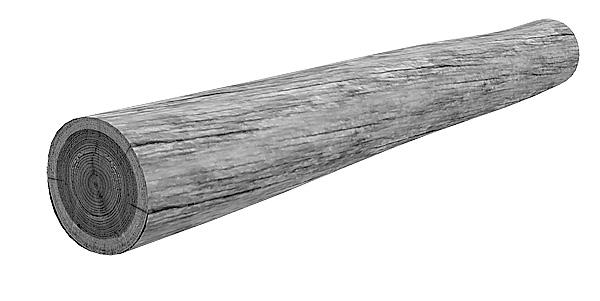Debarked round logs were traditionally used for construction, and these have been supplemented over the decades by logs cut and hewed to have straight sides. This enables panelling and extra insulation of the wall surfaces.
Round log
A round log has the shape of the original tree trunk, so working the log does not really change the internal stresses in the wood. There is little twisting in round logs. According to the traditional method, the logs to be used as round building logs are debarked and the surface is adjusted slightly. The logs thus have different thicknesses. There are two modern industrial ways of hewing logs: one where the heartwood remains in the middle while in the other the heartwood may shift quite much to the side. Heartwood shifted to the side can cause severe twisting.
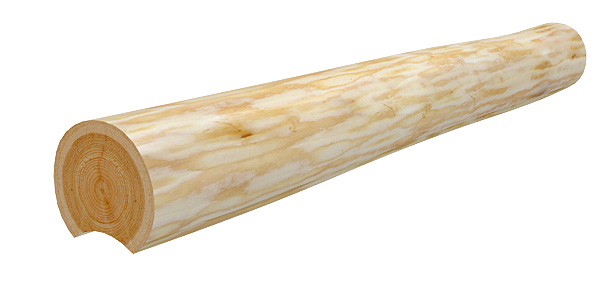
Hewn log
The oldest discovered log buildings in Finland were made of hewn logs. Hewn logs are more durable than round logs, because the surface wood has been cut out and the more durable heartwood has been exposed. In the past, walls were not usually painted or covered with wallpaper. In those days, the finished log frame was hewn to have a short wavy surface pattern. The hewing work was heavy and required much skill. Later on, as the sawmill industry evolved, logs were sawn to a certain thickness to square timber, which reduced the need for hewing work. When square logs were sawn, a potential margin for hewing had to be provided.
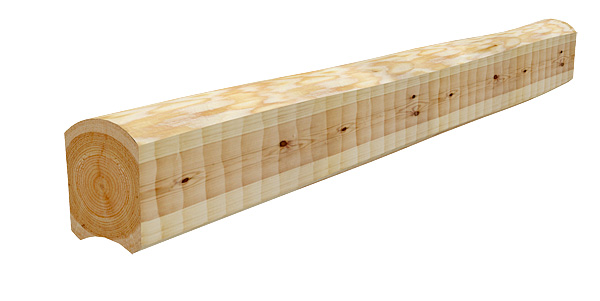
Planed log
Planed log is the most common industrial log type. Solid wood with a minimum thickness of 90 mm can be referred to as a log, while the biggest industrial single-wood logs are in practice 170 mm thick. Structures thicker than this are usually made by means of horizontal or vertical glued seams. The best material for a planed log is a heart-split wood, which does not really crack at its surface – however, it exhibits more twisting than a log where the heartwood is in the centre.
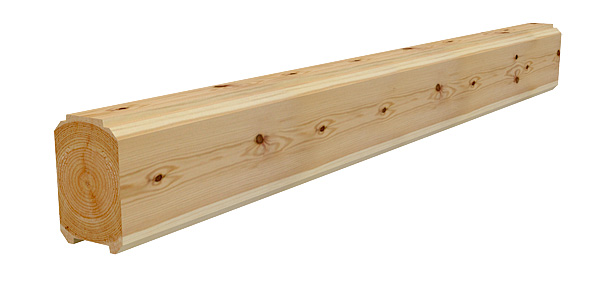
Layered log
Planed logs glued together from several segments have come to the market more recently. Their advantages are that they can made to specific dimensions and that they do not crack. Modern production lines can also mechanically machine dimensionally precise joints in material of uniform dimensions.
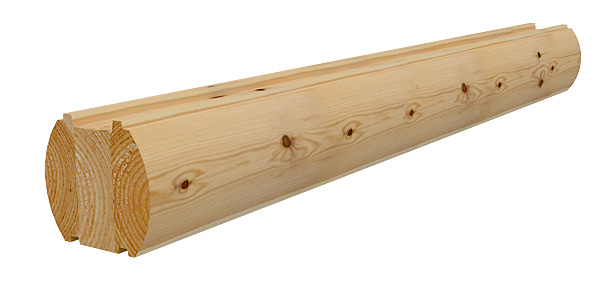
Logs of dead standing trees
Logs obtained from dead standing trees have been a popular material for log buildings since the 1960s. Their availability has decreased and consequently the prices have risen high. Care must be taken when handling and cutting these logs to avoid damaging the wood surface. The logs cannot be hewn straight, because the logs often have internal decay.
